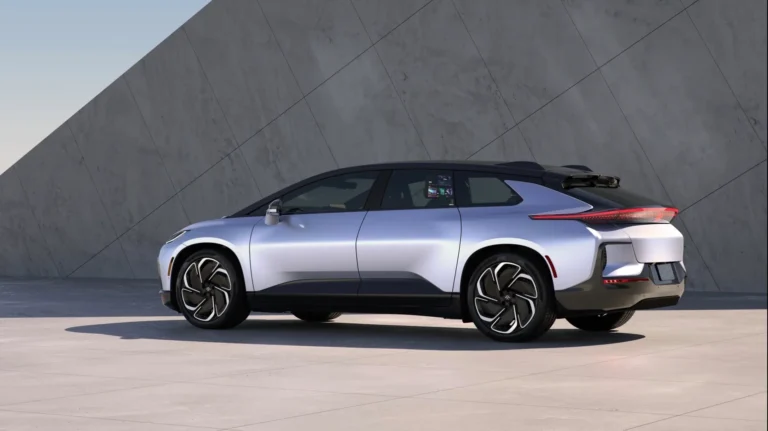
U.S. Car Rental Market Set for Robust Growth Through 2030 Amid Rising EV Adoption and Changing Consumer Preference
The U.S. car rental market is undergoing significant transformation, driven by evolving traveler demands, technological advancements, and a growing emphasis on sustainability. According to the recent report titled “U.S. Car Rental Market Size, Share & Trends Analysis Report by Vehicle Type, Application, and Booking Mode, with Growth Forecasts 2025-2030,” available on ResearchAndMarkets.com, the market valued at USD 37.88 billion in 2024 is projected to reach USD 56.27 billion by 2030, reflecting a healthy compound annual growth rate (CAGR) of 7.5%.
This upward trajectory is propelled primarily by increasing tourism activities, a shift toward flexible vehicle access over ownership, and the rapid integration of electric vehicles (EVs) into rental fleets. The report provides a granular view of market segments by vehicle types—including luxury, executive, economy cars, SUVs, and multi-utility vehicles (MUVs)—and by applications such as local usage, airport transport, and outstation travel, as well as by booking modes like online and offline channels.
Growing Demand Fueled by Tourism and Business Travel
A key driver of growth in the U.S. car rental market is the resurgence in tourism post-pandemic. Following the easing of COVID-19 restrictions, both domestic and international travel have rebounded strongly. The U.S. Travel Association notes that domestic travel spending exceeded pre-pandemic levels in 2023, signaling robust recovery momentum. This resurgence is particularly evident in major tourism and business hubs such as Orlando, Las Vegas, Los Angeles, and New York.
For many travelers, car rentals offer the freedom to explore destinations at their own pace, without the hassles of public transportation or rideshare dependency. This is especially attractive for leisure travelers seeking convenient access to tourist attractions and business travelers requiring efficient inter-city mobility. The report highlights that airport transport remains a dominant application segment, benefiting from increased flight volumes and airport traffic.
In parallel, business travel—although recovering selectively—continues to drive demand, especially for regional and intra-city trips. The rise of hybrid work models has encouraged corporations to rely more on rental fleets to facilitate employee mobility. For instance, Avis Budget Group’s recent quarterly disclosures emphasize the stabilizing effect of corporate travel on revenues, indicating a positive outlook for fleet utilization in this segment.
Shifting Consumer Preferences: Flexibility Over Ownership
Urbanization and the rising costs associated with vehicle ownership—including insurance, parking, fuel, and depreciation—are nudging consumers towards rental and subscription models. This trend is especially pronounced among millennials and Gen Z, who prioritize convenience and sustainability over long-term commitments.
Rental companies are capitalizing on this shift by expanding subscription services and offering short-term rentals accessible via mobile apps. Industry leaders like Hertz and Enterprise have reported notable increases in demand for these flexible rental options, which cater to consumers seeking hassle-free, on-demand access to vehicles without the burdens of maintenance or resale.
This evolution also coincides with an increasing digitalization of the booking experience. The integration of advanced online platforms and mobile apps enables customers to reserve vehicles seamlessly, make digital payments, and even unlock cars via smartphones. Such innovations have enhanced customer satisfaction and broadened the rental market’s appeal.
Electric Vehicles Gain Ground in Rental Fleets
Perhaps the most transformative trend identified in the report is the accelerating adoption of electric vehicles (EVs) within rental fleets. With rising environmental awareness and stricter emissions regulations, consumers are increasingly seeking eco-friendly transportation options.
Car rental companies are responding by gradually introducing EVs, including popular models from Tesla, Chevrolet, Nissan, and others, into their offerings. This not only aligns with sustainability goals but also appeals to a growing segment of eco-conscious travelers who prefer greener alternatives.
The entry of specialized EV rental startups into the U.S. market further exemplifies this shift. For example, UFODrive, a European EV rental platform, launched its services in San Francisco in August 2022 and expanded to New York and Austin shortly after. The company’s contactless EV rental model capitalizes on rising gas prices, limited rental car availability, and increasing consumer preference for electric mobility.
By incorporating EVs, rental companies also prepare for the future, as governments and municipalities ramp up infrastructure investments such as public charging stations. This strategic move enhances the rental experience while contributing to broader environmental sustainability efforts.
Post-Pandemic Focus on Hygiene and Safety
In response to heightened health concerns, rental companies have implemented rigorous cleaning and sanitization protocols to reassure customers. Enhanced safety measures include thorough vehicle disinfection, contactless check-in/check-out, and flexible cancellation policies.
These efforts have boosted consumer confidence, contributing to the growing preference for rental vehicles over shared transportation modes like buses or rideshares, which are perceived as higher risk in terms of exposure to pathogens.
Market Segmentation and Competitive Landscape
The report’s detailed segmentation sheds light on the nuances shaping the U.S. car rental market:
- By Vehicle Type: Economy cars remain the most popular due to affordability and fuel efficiency, followed by SUVs and luxury cars that cater to premium travelers. The report forecasts steady growth across all categories, with increasing demand for SUVs and electric luxury vehicles.
- By Application: Local usage, airport transport, and outstation travel represent distinct user needs. Airport rentals dominate in volume, but local usage is gaining traction as consumers seek flexible, short-term transportation within cities.
- By Booking Mode: Online booking channels continue to gain market share, driven by convenience and technological enhancements. Despite this, offline/direct bookings still account for a significant portion, especially among older demographics less inclined toward digital platforms.
On the competitive front, major players including Enterprise Holdings, The Hertz Corporation, Avis Budget Group, Sixt, and emerging tech-enabled providers such as Turo and Getaround, form the backbone of the market. These companies are aggressively investing in fleet modernization, digital innovation, and sustainability initiatives to differentiate themselves.
Strategic Insights and Market Outlook
The U.S. car rental market is poised for robust expansion through 2030, supported by:
- Technological Innovation: Enhanced mobile applications, IoT integration for fleet management, and contactless service features are revolutionizing customer engagement and operational efficiency.
- Sustainability Initiatives: The integration of electric and hybrid vehicles responds to both regulatory pressures and consumer demand for greener transportation.
- Changing Mobility Patterns: The shift from ownership to flexible usage models, including subscriptions and short-term rentals, is reshaping market dynamics.
- Travel Sector Recovery: The sustained growth in tourism and business travel fuels consistent demand for rental vehicles.
However, challenges such as fluctuating fuel prices, ongoing supply chain disruptions affecting vehicle availability, and evolving regulatory frameworks require companies to remain agile and innovative
This comprehensive market analysis serves as a vital tool for stakeholders—including rental companies, fleet operators, investors, and policymakers—to navigate the competitive landscape, identify emerging trends, and craft strategies that capitalize on new opportunities. The report provides actionable insights backed by detailed segmentation, competitive benchmarking, and future outlooks that enable informed decision-making.







